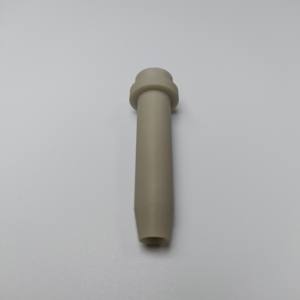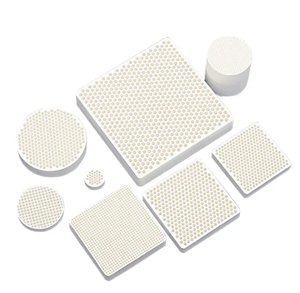Discover Premium Ceramic Products | Durability & Elegance United | Advanced Ceramics
PRODUCT PARAMETERS
Description
Overview of aluminum nitride ceramics
Aluminum Nitride Ceramic is an advanced ceramic material with aluminum nitride as the main component. It has been widely used in electronics, optics, and mechanics due to its unique properties.
Features of aluminum nitride ceramics
High thermal conductivity: Aluminum nitride ceramics have relatively high thermal conductivity, usually between 170-260 W/m·K, which makes it an excellent heat dissipation material. It is especially suitable for electronic devices that require efficient heat dissipation, such as substrate materials for power semiconductor devices.
Good electrical insulation: Despite its high thermal conductivity, aluminum nitride ceramics are excellent insulators of electricity, which can effectively prevent current leakage and ensure the safe operation of electronic components.
Low dielectric constant and dielectric loss: These characteristics make aluminum nitride ceramics very suitable for use in high-frequency circuits because it can reduce energy loss during signal transmission.
High temperature resistance: Aluminum nitride ceramics can maintain structural stability and strength at extremely high temperatures. Its melting point is about 2800°C, so it is suitable for applications in high temperature environments.
Low thermal expansion coefficient: Compared with semiconductor materials such as silicon, aluminum nitride has a lower thermal expansion coefficient, which means it has better dimensional stability when the temperature changes, which helps improve packaging reliability.
Corrosion resistance: Aluminum nitride ceramics have good chemical stability to most molten metals and are not easily oxidized or corroded, allowing them to perform well in harsh environments.
High mechanical strength: Although not as hard as some other types of ceramic materials, aluminum nitride ceramics still provide enough mechanical strength to allow them to be used in many structural applications.
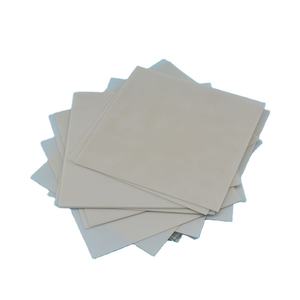
(Aluminium Nitride Aln Ceramic Substrate Sheet for Electronic)
Specifications of Aluminium Nitride Aln Ceramic Substrate Sheet for Electronic
Light Weight Aluminum Nitride (AlN) ceramic substrate sheets serve essential duties in high-performance electronic applications. These substrates master thermal administration because of their high thermal conductivity, normally ranging between 170-230 W/m · K. This building enables efficient warm dissipation, decreasing overheating dangers in devices. AlN substrates offer solid electrical insulation, with quantity resistivity surpassing 10 ^ 14 Ω · centimeters. This prevents present leak in circuits, ensuring stable performance.
The material’s thermal growth coefficient carefully matches silicon, around 4.5 ppm/ ° C. This compatibility minimizes thermal tension when coupled with semiconductor elements, enhancing gadget long life. AlN ceramic substratums maintain structural honesty under mechanical anxiety, with flexural strength over 300 MPa. They withstand contortion also sought after settings.
Chemical security is one more crucial feature. AlN substrates hold up against direct exposure to acids, alkalis, and destructive gases. This makes them ideal for extreme commercial setups. Surface smoothness is essential for microelectronics. AlN sheets achieve surface roughness listed below 0.1 μm, allowing specific deposition of thin-film circuits.
Requirement density choices range from 0.25 mm to 1.5 mm, catering to diverse layout requirements. Personalized sizes are offered for specialized applications. Running temperatures span from -50 ° C to 500 ° C, ensuring dependability throughout extreme problems.
These substrates are widely utilized in LED components, power electronic devices, and RF elements. Their capacity to handle high-frequency signals makes them suitable for 5G interaction systems. AlN sheets additionally work as baseplates for laser diodes and protected gate bipolar transistors (IGBTs).
Suppliers use personalization for metallization layers. Choices include gold, silver, or copper finishings applied via thick-film or thin-film strategies. This versatility sustains particular soldering or wire-bonding requirements. Surface finishes can be adapted to improve attachment for circuit traces or thermal interface products.
Aluminum Nitride ceramic substrates balance performance with toughness. Their mix of thermal, electric, and mechanical residential properties addresses difficulties in sophisticated electronics. Engineers count on these products to enhance thermal pathways while keeping compact device layouts.
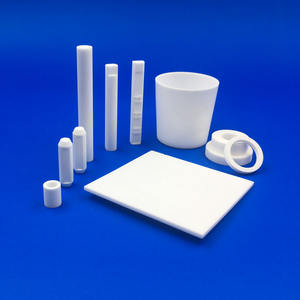
(Aluminium Nitride Aln Ceramic Substrate Sheet for Electronic)
Applications of Aluminium Nitride Aln Ceramic Substrate Sheet for Electronic
Light Weight Aluminum Nitride (AlN) ceramic substratum sheets are extensively used in electronic devices due to their unique buildings. These materials take care of high warmth successfully. They transfer warmth better than lots of other ceramics. This makes them perfect for devices that generate a lot of thermal power. Power electronic devices like IGBTs and MOSFETs rely upon AlN substrates. These parts require secure performance under high temperatures. AlN sheets help protect against overheating. This boosts gadget reliability and life-span.
LED lighting systems gain from AlN substratums. High-power LEDs generate substantial warmth during procedure. Effective heat dissipation is crucial. AlN sheets attract heat far from LED chips. This keeps illumination and color consistency. It likewise decreases the threat of failing.
RF and microwave gadgets use AlN ceramic substratums. These applications require products with reduced signal loss. AlN gives superb electrical insulation. It supports high-frequency performance. This is essential for communication tools and radar systems.
Semiconductor product packaging needs materials that manage thermal expansion. AlN’s thermal growth rate matches silicon. This minimizes stress at product user interfaces. It stops cracks or delamination in advanced chip designs. AlN substratums are made use of in laser diodes and power components. They ensure secure connections in extreme settings.
AlN ceramic sheets are chemically secure. They resist rust from acids and antacids. This makes them appropriate for commercial sensors and harsh-condition electronic devices. Their mechanical strength sustains slim, long lasting layouts. Manufacturers use them in compact, high-density circuits.
Aluminum Nitride substrates are safe and ecologically secure. They satisfy policies for hazardous compound restrictions. This lines up with green production fads. Their adaptability covers automotive, aerospace, telecommunications, and renewable energy sectors. Designers choose AlN for its equilibrium of thermal, electrical, and mechanical advantages.
Company Introduction
Advanced Ceramics founded on October 17, 2014, is a high-tech enterprise committed to the research and development, production, processing, sales and technical services of ceramic relative materials and products.. Since its establishment in 2014, the company has been committed to providing customers with the best products and services, and has become a leader in the industry through continuous technological innovation and strict quality management.
Our products includes but not limited to Silicon carbide ceramic products, Boron Carbide Ceramic Products, Boron Nitride Ceramic Products, Silicon Carbide Ceramic Products, Silicon Nitride Ceramic Products, Zirconium Dioxide Ceramic Products, Quartz Products, etc. Please feel free to contact us.(nanotrun@yahoo.com)

Payment Methods
T/T, Western Union, Paypal, Credit Card etc.
Shipment Methods
By air, by sea, by express, as customers request.

5 FAQs of Aluminium Nitride Aln Ceramic Substrate Sheet for Electronic
What is aluminium nitride ceramic substrate sheet used for?
Aluminium nitride ceramic substrate sheets are mainly used in electronic devices needing high thermal conductivity. They help transfer heat away from components like power semiconductors, LED chips, and radio frequency modules. This prevents overheating and improves device reliability.
How does aluminium nitride compare to alumina ceramics?
Aluminium nitride conducts heat much better than alumina. Alumina has around 20-30 W/mK thermal conductivity. Aluminium nitride offers 150-180 W/mK. This makes aluminium nitride better for high-power applications where heat buildup is a problem.
Can aluminium nitride substrates handle high temperatures?
Yes. Aluminium nitride substrates work well in temperatures up to 1000°C. They stay stable under extreme heat without cracking or warping. This makes them suitable for harsh environments like aerospace or automotive electronics.
Why pick aluminium nitride over beryllia ceramics?
Aluminium nitride is safer. Beryllia is toxic if inhaled as dust. Aluminium nitride provides similar thermal performance without health risks. It also resists corrosion better in humid or chemically active settings.
How should aluminium nitride substrates be stored?
Store them in dry, room-temperature conditions. Moisture can cause surface reactions over time. Handle with clean gloves to avoid oil or dirt contamination. Use non-abrasive cleaning methods if needed.
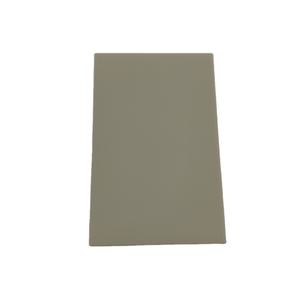
(Aluminium Nitride Aln Ceramic Substrate Sheet for Electronic)
REQUEST A QUOTE
RELATED PRODUCTS
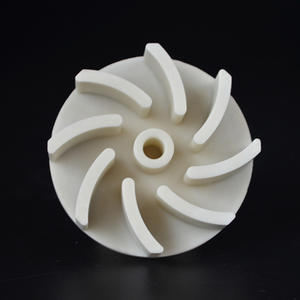
Industry Electrical CNC Machining Ceramic Component Aluminum Nitride Ceramic ALN Heat Sink
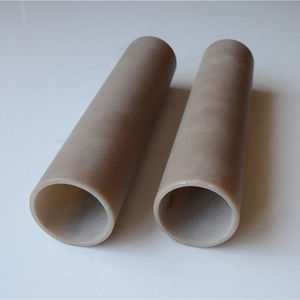
High Thermal Conductivity ALN Aluminum Nitride Ceramic AlN Structural Block
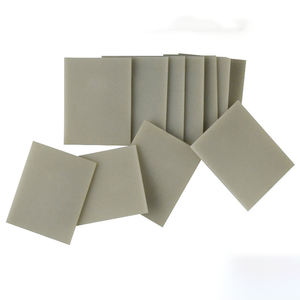
Semiconductor Used Customized Mirror Polish Aluminum Nitride Plate Ain Ceramic Disc Wafer
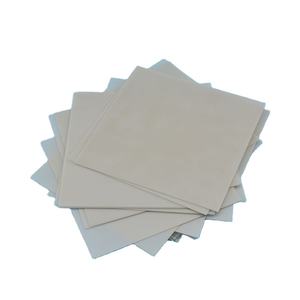
140× 190mm 0.38mm 0.5mm 0.635mm Thick Aluminum Nitride Ceramic Plate Aln Substrate
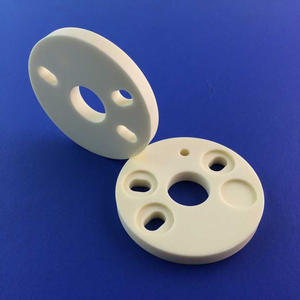
Advanced Aluminum Nitride Ceramics for Superior Thermal Management Solutions
